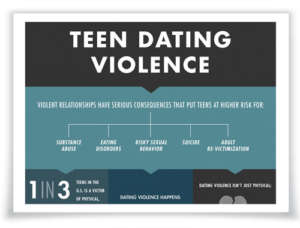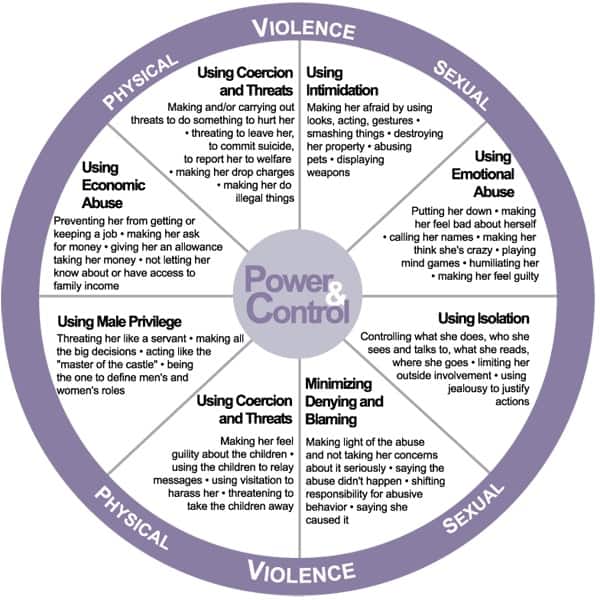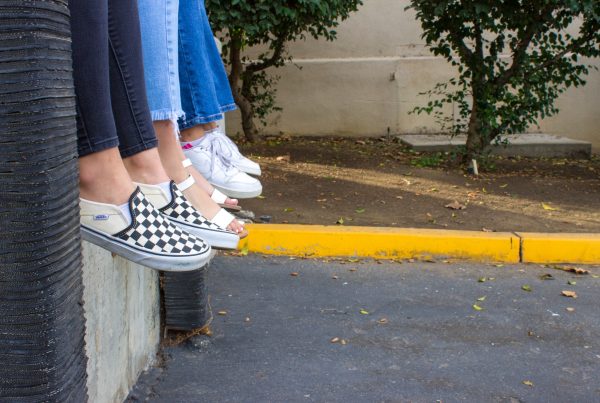 Dating violence comes from a desire to control a partner; it is an issue of maintaining a vertical hierarchy, believing that their role in the relationship is to “be in charge”–to “wear the pants,” so to speak. Abusive behavior is a result of learning from a dysfunctional source: A child who grows up watching their father dominate their mother is more apt to do the same when they are in relationship. A child who grows up witnessing violence begins to think violence is normal and acceptable. When we learn something from a skewed perspective, our norms become skewed as a result. Additionally, when someone learns about sexuality via abuse, they are more apt to sexually abuse a partner. When someone learns to communicate by witnessing domination and control, they will eventually use the same dysfunctional means of communication.
Dating violence comes from a desire to control a partner; it is an issue of maintaining a vertical hierarchy, believing that their role in the relationship is to “be in charge”–to “wear the pants,” so to speak. Abusive behavior is a result of learning from a dysfunctional source: A child who grows up watching their father dominate their mother is more apt to do the same when they are in relationship. A child who grows up witnessing violence begins to think violence is normal and acceptable. When we learn something from a skewed perspective, our norms become skewed as a result. Additionally, when someone learns about sexuality via abuse, they are more apt to sexually abuse a partner. When someone learns to communicate by witnessing domination and control, they will eventually use the same dysfunctional means of communication.
There are higher rates of mental health and substance abuse issues in teens who have been victims of violence or who are delegators of violence. It’s not uncommon for those suffering from addiction and mental health issues to have an underlying band of trauma from violence weaving its way through the psyche. Deep, untended fear is often expressed through violence and efforts to control people, places, and things. This results in teen dating violence having a big impact. Loveisrespect.org is a site dedicated to raising awareness about dating violence through education, community, and action. The statistics around dating violence are significant. Loveisrespect has provided hard facts supported by research and empirical evidence which I am including here:
- Nearly 1.5 million high school students nationwide experience physical abuse from a dating partner in a single year.
- One in three adolescents in the U.S. is a victim of physical, sexual, emotional, or verbal abuse from a dating partner.
- One in 10 high school students has been purposefully hit, slapped, or physically hurt by a boyfriend or girlfriend.
- One quarter of high school girls have been victims of physical or sexual abuse.
- Girls and young women between the ages of 16 and 24 experience the highest rate of intimate partner violence — almost triple the national average.
- Violent behavior typically begins between the ages of 12 and 18.
- The severity of intimate partner violence is often greater in cases where the pattern of abuse was established in adolescence.
- About 72% of eighth and ninth graders are “dating.”
- Violent relationships in adolescence can have serious ramifications by putting the victims at higher risk for substance abuse, eating disorders, risky sexual behavior, and further domestic violence.
- Being physically or sexually abused makes teen girls six times more likely to become pregnant and twice as likely to get a STI.
- Half of youth who have been victims of both dating violence and rape attempt suicide, compared to 12.5% of non-abused girls and 5.4% of non-abused boys.
There is a lack of awareness regarding teen dating violence. Paralyzed with fear and embarrassment, many teens don’t say anything to anyone. Asking for help is regarded as shameful, fear of retaliation is overwhelming, and because there is little knowledge about legal ramifications, many stay quiet.
- Only 33% of teens who were in a violent relationship ever told anyone about the abuse.
- 81% percent of parents believe teen dating violence is not an issue or admit they don’t know if it’s an issue.
- A teen’s confusion about the law and their desire for confidentiality are two of the most significant barriers stopping young victims of abuse from seeking help.
You also can refer to this Circle of Violence; it breaks down each type of domestic violence and action that take place. None of these are acceptable or deserved. Small problems can become large problems faster than the blink of an eye so it’s important that we seek help and begin the process of extricating ourselves from violent situations. Start with finding one person who is safe, who believes you, and who can advocate for you. Stay away from those who victim-blame, telling you it’s your fault or asking if you are “sure” it’s true, and from people who deny your reality. Getting out is scary; it takes a serious act of bravery to move toward safety. But there are people who will help you. There is a way out. You deserve much, much better.








